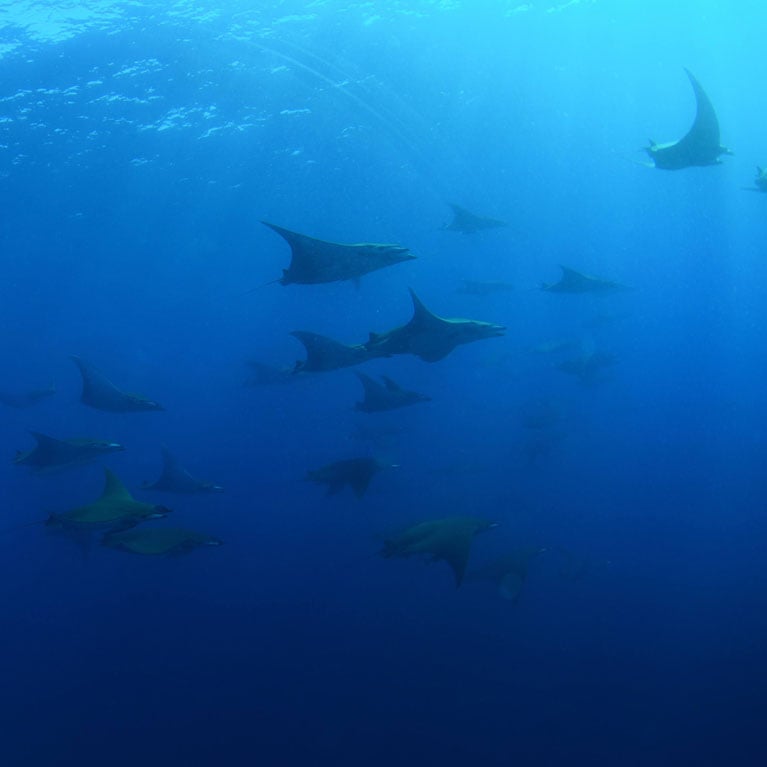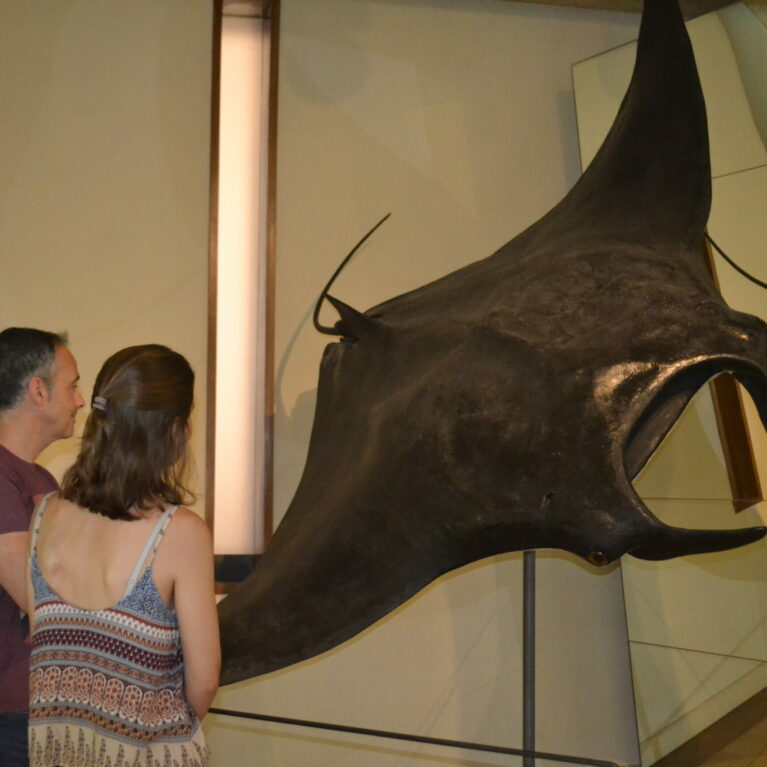Manta and devil rays of the Canary Islands
Alicia is using community science and traditional ecological knowledge to gather information about the presence of mobulid rays in the Canary Islands. She also hopes to establish the first regional photo-ID catalogue for the Chilean devil ray and the giant manta ray. Alicia wants to know which mobulid species occur in Canarian waters and when they frequent the area. Do some stay year-round? Do they observe seasonal patterns? And how are their populations connected to other regions of the Atlantic Ocean? She will use the information she gathers to increase public knowledge and local government support for the conservation and management of the rays.
I grew up in Madrid, Spain, far from the ocean. In summer, I was lucky enough to go on holiday with my family to the beach and I would often scan the horizon in the hope of seeing a whale blow. I always knew I wanted to dedicate my life to the study of the ocean, to explore and conserve it. I studied biology in Madrid, followed by an MSc in biodiversity and conservation at the University of Leeds in the UK. Here I discovered my passion for research, when I monitored the impact of a planned...


Chasing devils: a pioneer study on the occurrence of mobulids in the Canary islands
We aim to provide baseline information about the occurrence of mobulids in the Canary Islands through citizen science and traditional ecological knowledge and to establish the first regional photo-identification catalogue for sicklefin devil rays and oceanic manta rays. It is essential to increase local and governmental awareness about this group.
The lack of basic information about manta and devil rays in the Canary Islands is remarkable, considering their presence in these waters. There is not even solid information about where the species occur. What is the role of the Canary Islands in their ecology? This is key to understanding the conservation status of these endangered animals at a global level.
Little is known about manta and devil rays in the Canary Islands, but they do roam its waters. The first photographed mobulid in the archipelago, dating from 1931 and caught in Las Palmas harbour, was identified as an oceanic manta ray Mobula birostris. Three species are officially cited for these islands: oceanic manta ray, sicklefin devil ray M. tarapacana and giant devil ray M. mobular. Mobulids are sighted in the Canary Islands all year round, unlike in other regions, and big groups of sicklefin devil rays are seen at El Hierro island in summer. However, we still don’t understand the importance of the region for these species. The highly migratory and elusive nature of these animals makes them difficult to study, so increasing the research effort in places where they are easily encountered is crucial to their conservation. This project is the first mobulid-focused research to be undertaken in the Canary Islands and aims to fill this knowledge gap.
Citizen science is widely used in research into charismatic species, helping to make significant advances in a broad range of studies. Scientists rely upon the general public to be their ‘eyes and ears’ and to observe the target species in locations they cannot reach. Citizen science presents an opportunity for regular monitoring to be conducted while actively engaging local communities in conservation, and it is the pillar of our project. Photo identification helps us to understand when, where and why different species occur. By creating photo-identification catalogues where species aggregate, such as in the Azores and the Canary Islands, and by collaborating with similar projects in other regions, we can unveil movement patterns and connectivity and ultimately work for the conservation of these species.
- To review the occurrence of mobulid species in the Canary Islands, noting which species are present and when they visit Canarian waters.
- To determine the seasonal patterns of abundance and site fidelity for the sicklefin devil ray and oceanic manta ray and study potential connectivity between the Canary Islands and other regions of the Atlantic Ocean.
- To increase local communities’ knowledge about manta and devil rays in the Canary Islands and provide information to support management by local government.
Summary of main research results/outcomes
Chasing Devils has provided the first baseline information compilation on the Mobulidae family in the Canary Islands, based on an integrative methodology that has combined a comprehensive literature review, fishers’ interviews and citizen science. Through the establishment of collaborations with ecotourism centers and educational activities, this
project has effectively raised awareness on the presence of this group of animals in the Canary Islands. The identification of at least 4 species of mobulids, as well as evidences of vital activities in the region underscore the archipelago’s importance for these endangered animals. The gathered data provides support to include the species under protective national legislation and significantly contributes to filling knowledge gaps concerning this group in the Eastern Atlantic Ocean.

